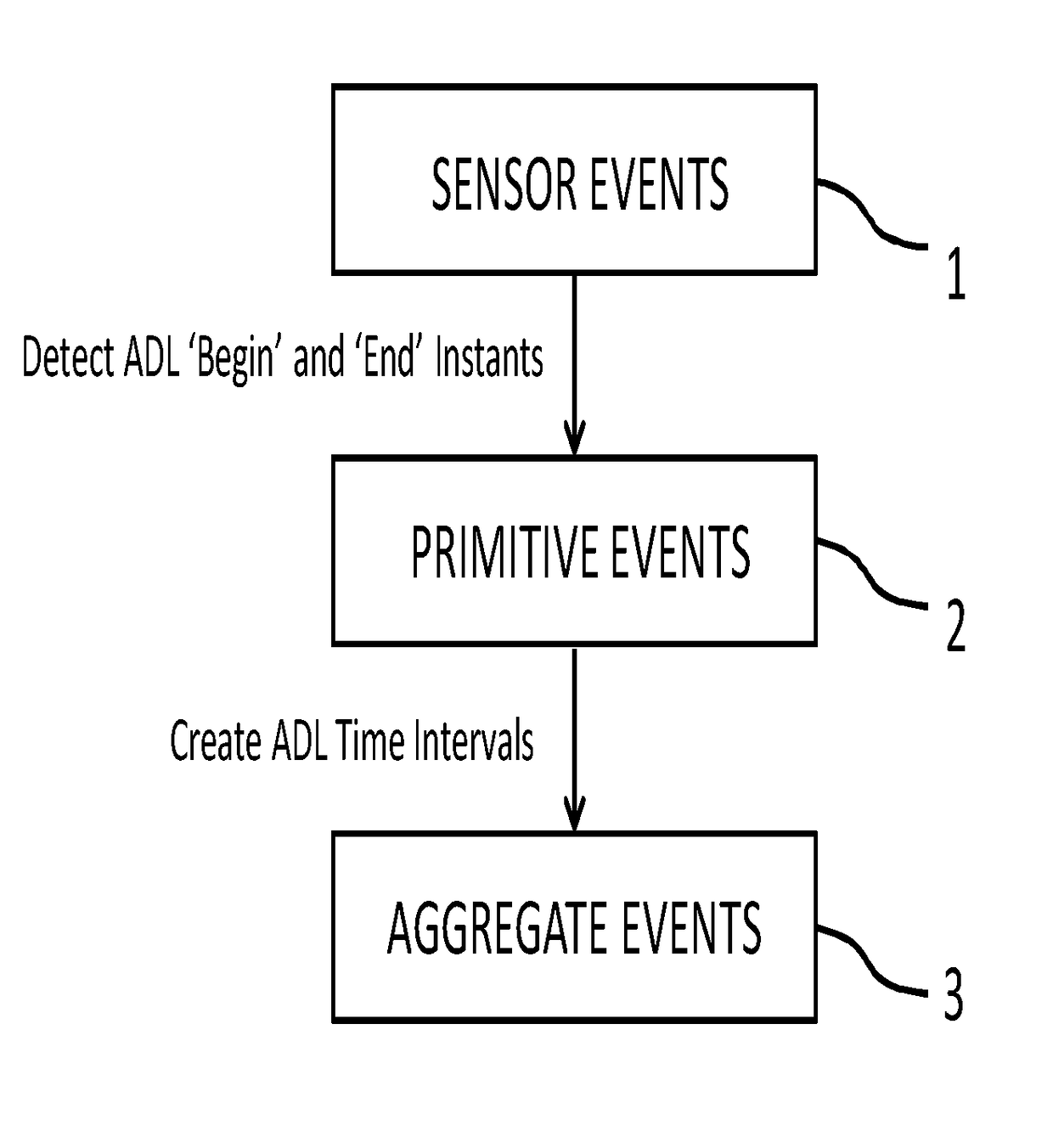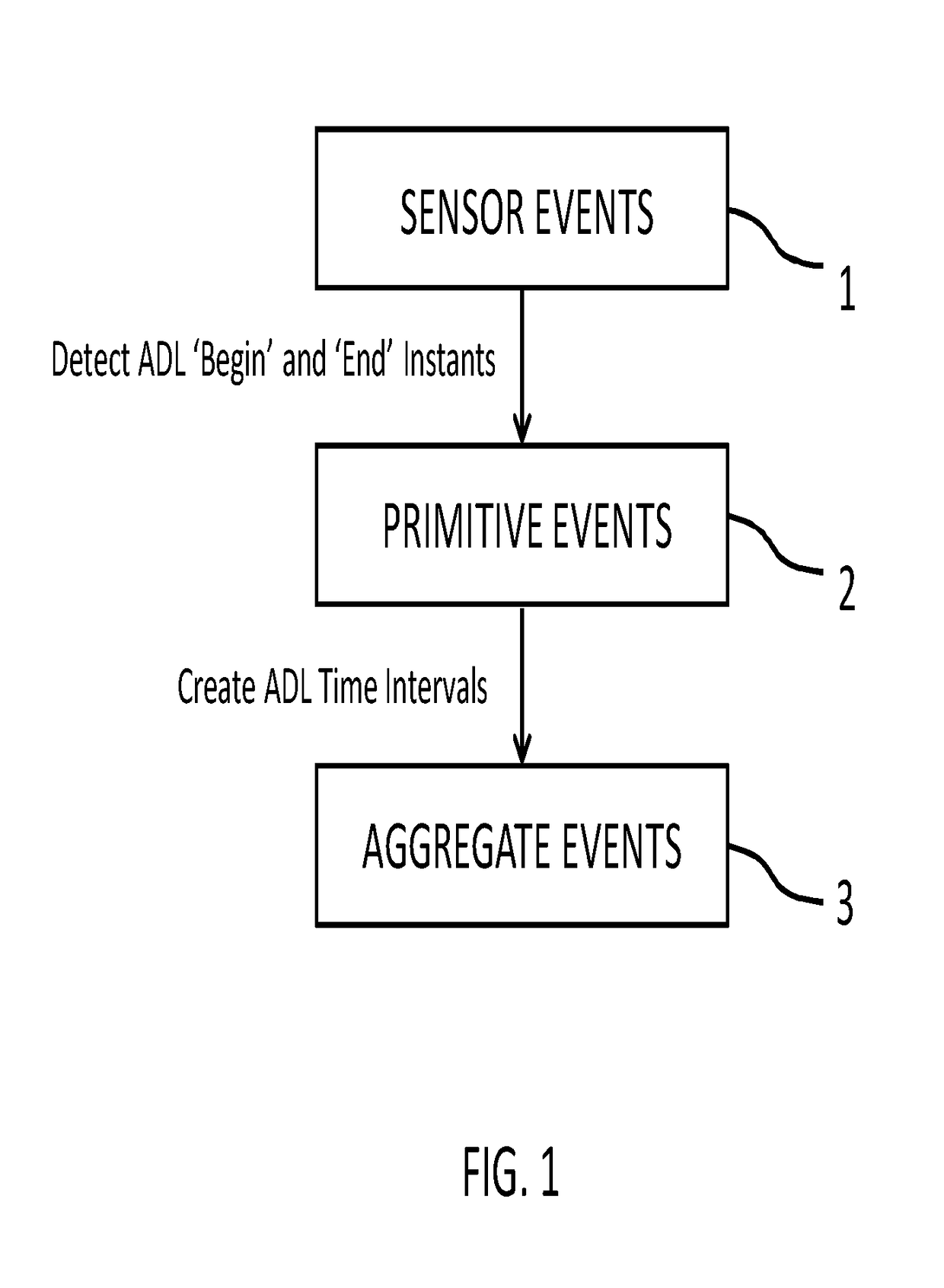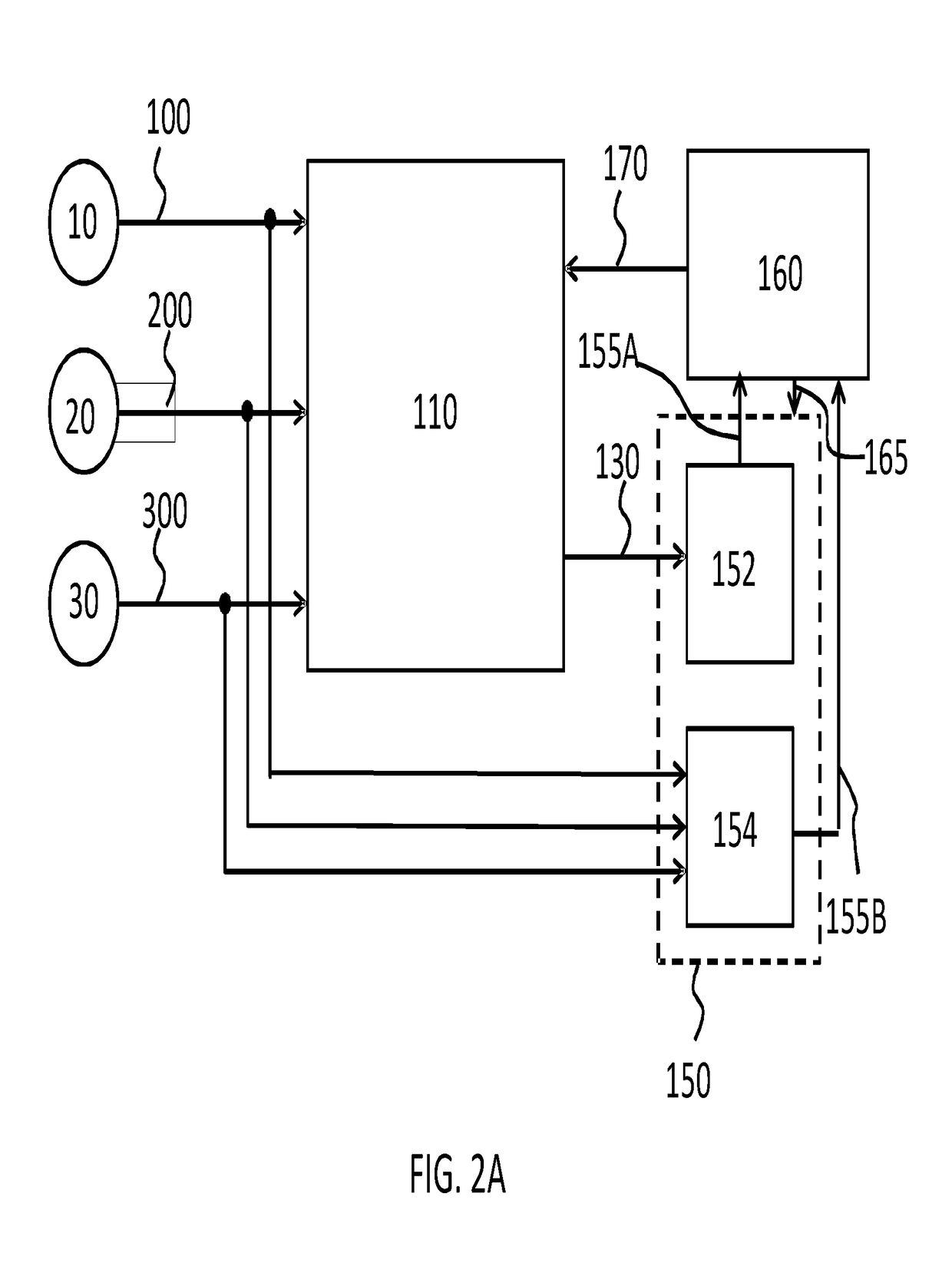A system and method for monitoring activities of daily living of a person
a monitoring system and daily living technology, applied in the field of system and method for monitoring the activities of daily living of a person, can solve the problems of not allowing assessment, one-time assessment of function does not allow assessment of functional performance variability, and the wide range of variations is encountered with major difficulties, so as to reduce computational complexity, improve maintenance abilities, and reduce processing requirements
- Summary
- Abstract
- Description
- Claims
- Application Information
AI Technical Summary
Benefits of technology
Problems solved by technology
Method used
Image
Examples
Embodiment Construction
[0060]Proposed is a concept for monitoring activities of daily living, ADLs, of a person within an environment. Persons that may be monitored by embodiment may, for example, include a disabled person, an elderly person, an injured person, a medical patient, etc.
[0061]Illustrative embodiments may be utilized in many different types of monitoring environments, such as a hospital, ward, care home, person's home, etc. In order to provide a context for the description of elements and functionality of the illustrative embodiments, the Figures are provided hereafter as examples of how aspects of the illustrative embodiments may be implemented. It should therefore be appreciated the Figures are only examples and are not intended to assert or imply any limitation with regard to the environments, systems or methods in which aspects or embodiments of the present invention may be implemented.
[0062]It has been recognized that in many care situations there is a need to be informed about the ADLs ...
PUM
 Login to View More
Login to View More Abstract
Description
Claims
Application Information
 Login to View More
Login to View More - R&D
- Intellectual Property
- Life Sciences
- Materials
- Tech Scout
- Unparalleled Data Quality
- Higher Quality Content
- 60% Fewer Hallucinations
Browse by: Latest US Patents, China's latest patents, Technical Efficacy Thesaurus, Application Domain, Technology Topic, Popular Technical Reports.
© 2025 PatSnap. All rights reserved.Legal|Privacy policy|Modern Slavery Act Transparency Statement|Sitemap|About US| Contact US: help@patsnap.com



